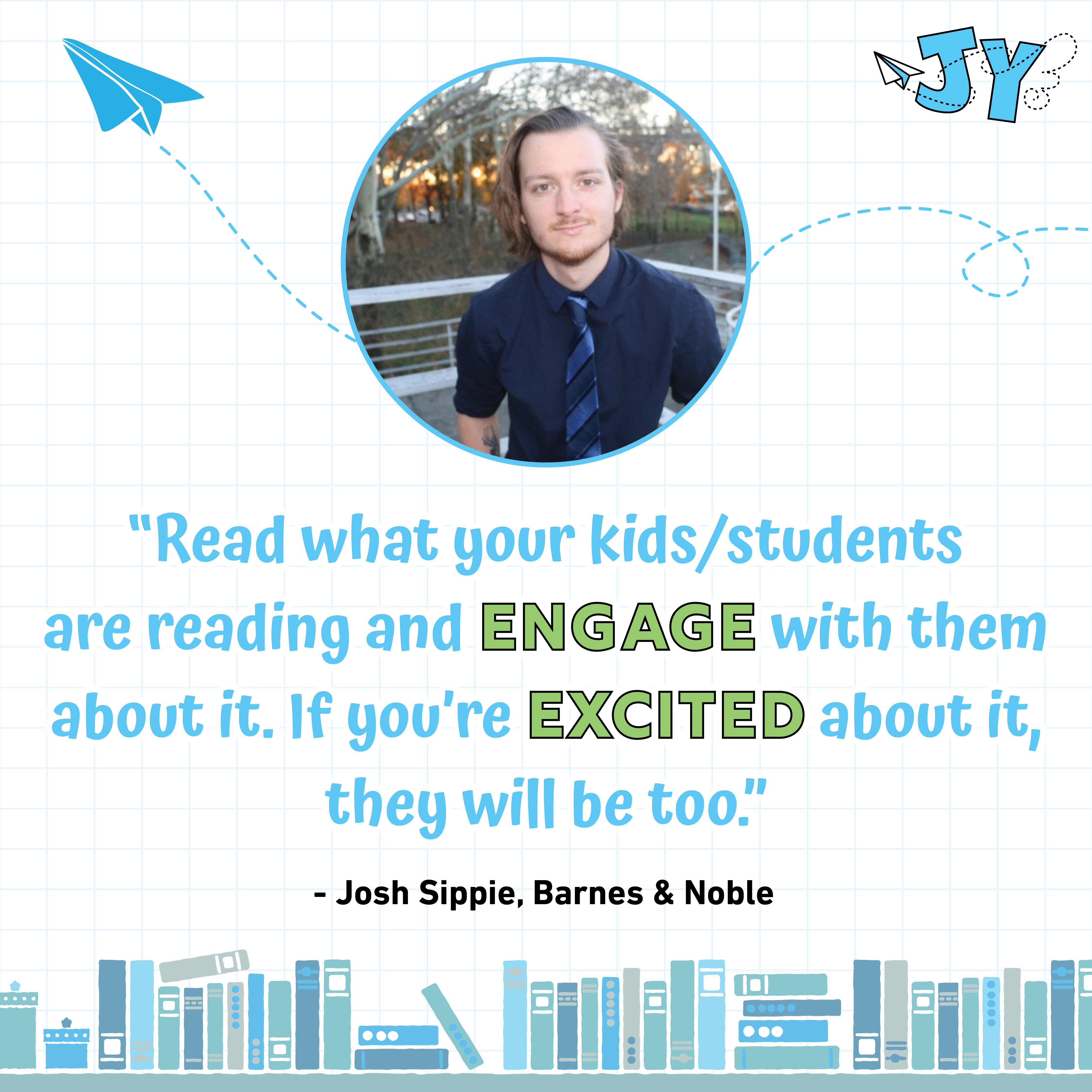Menu



Posted Mar 27, 2025
Read Across America with JY: Introducing Josh Sippie
JY is celebrating Read Across America and the importance of books for kids by highlighting some of our partners and the tremendous work they do! We’re excited to introduce Josh Sippie with Barnes & Noble.
Check out what they have to say about graphic novels and reading the Q&A below!
Why are graphic novels/comics good for kids?
Graphic novels and comics are good for kids the same way that “traditional” books are good for kids. It allows them to explore the world, their imagination, their developing emotions, and themselves, all on the safety of the page. If they face monsters in a story, they’ll be more familiar with how to face real, everyday monsters in real life. And since it’s visually driven, it’s so much more accessible and approachable for readers of any level. In an age when reading is competing with social media and video games, having vibrant colors, gorgeous worlds and stylized characters is a stronger draw to get kids engaged in stories than words on a page.
Why do you love most about being in the children’s books/middle-grade space?
I love seeing kids get excited by reading, or seeing the looks on their faces when they open a new book, see the art, and get lost in the world on the page. I have two nephews who are as reluctant to reading as I was when I was there age, and I just loved hearing that they were enjoying reading My Hero Academia and Diary of a Wimpy Kid. We're all trying to figure out how to get kids reading. It's a problem in America with the declining middle grade readership, so any time any kid finds joy on the page—be it manga, comics or cartoons—it's a win.
What are your tips to make reading more fun?
Read what your kids/students are reading and engage with them about it. If you’re excited about it, they will be too. And if you need any help getting excited about reading books “for kids,” then read Katherine Rundell’s Why You Should Read Children's Books, Even Though You Are So Old and Wise. And even if you don’t want to read it too, ask them questions about it. What did they like, who did they identify with, etc.
Reward reading. I didn’t willingly read as a kid, the only thing that got me to open a book was Pizza Hut’s BookIt program. Every ten books you get a free pizza. It was magic. But while reading is its own reward, in order for it to become that, sometimes you need to call in a little help. Barnes & Noble has a year-long program for kids, if you come into the children’s section and find a bookseller, you can get a seasonal die-cut, write what book you read and what you liked about it, and stick it to the wall to celebrate.
Also, diversify what you're picking up off shelves. Dog Man and Wimpy Kid have gotten through to so many young readers, and that's wonderful, but there are amazing stories on the shelves next to them that can keep that momentum going. You never know what kids are going to gravitate towards until they experience it.
What are some myths you hear about graphic novels/comics and how would you respond to them?
To this day I still hear parents/guardians tell kids in the children’s section at bookstores, “okay we can get this comic book, but you have to get a real book too.” I can’t believe it’s still being said. Openly. In public. Like this is an acceptable way of thinking. It’s not. Comics and graphic novels are real books, maybe even more real than “real” books because there are levels of engagement you don’t get out of traditional prose. Readers can see the characters, the worlds they inhabit, their reaction to stress, fear, joy, and better understand what effect these complexities have on you. And not for nothing, comics and graphic novels still tell complete stories, they still have all the layers a traditional prose book will have.
Same goes with audiobooks. It's hard enough getting kids to read, what's the point in putting up false barriers of what "real" reading is? A story is a story is a story, whatever form it takes.
How would you encourage celebrating reading all year long?
A lot of what I mentioned above, rewarding reading, engaging with young readers, reading what they’re reading, taking regular trips to the library, but there are also fun little ways to keep the energy to read. Monthly reading challenges, for instance, having a new theme a month, or using movies based on books to encourage deeper thinking about stories—what did the movie do that the book didn’t, which did they enjoy more, etc.
Also, so many children's book authors are getting out there to do school and library visits, they want to engage with their readers. On social media too, you can find authors like Kwame Mbalia dropping daily dad jokes on Instagram or illustrators sharing live drawings. Get kids in front of their favorite creators and let them better connect with their favorite stories.


